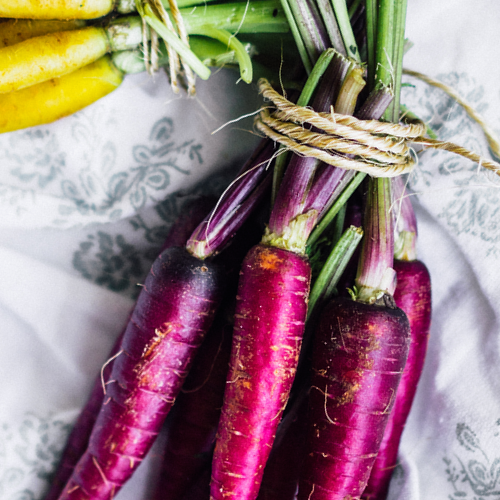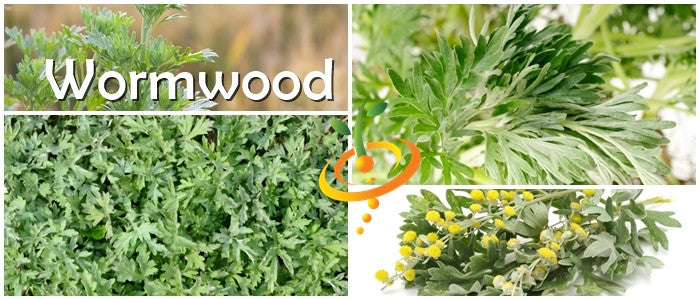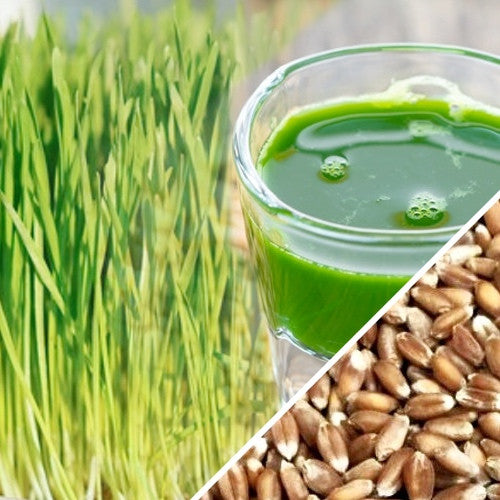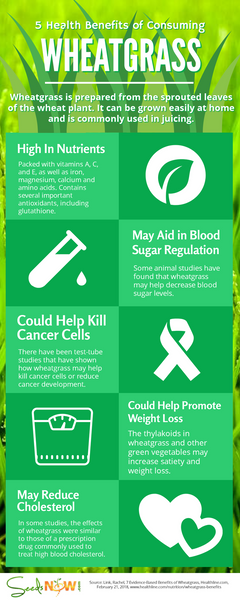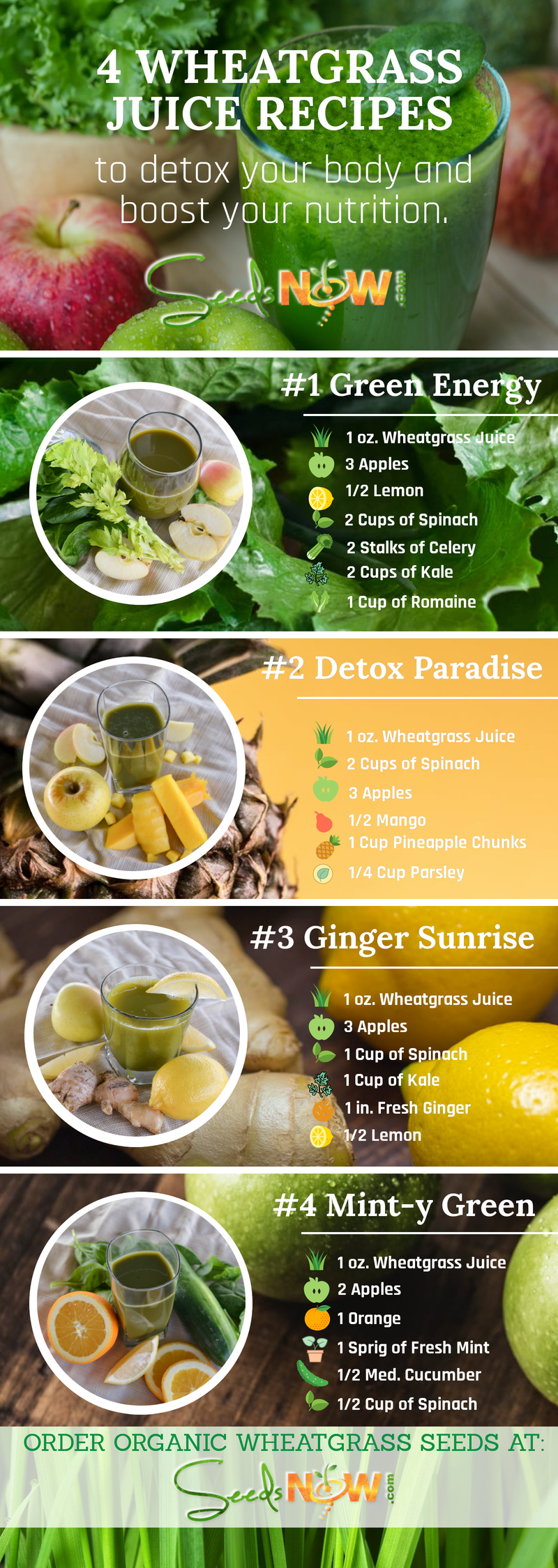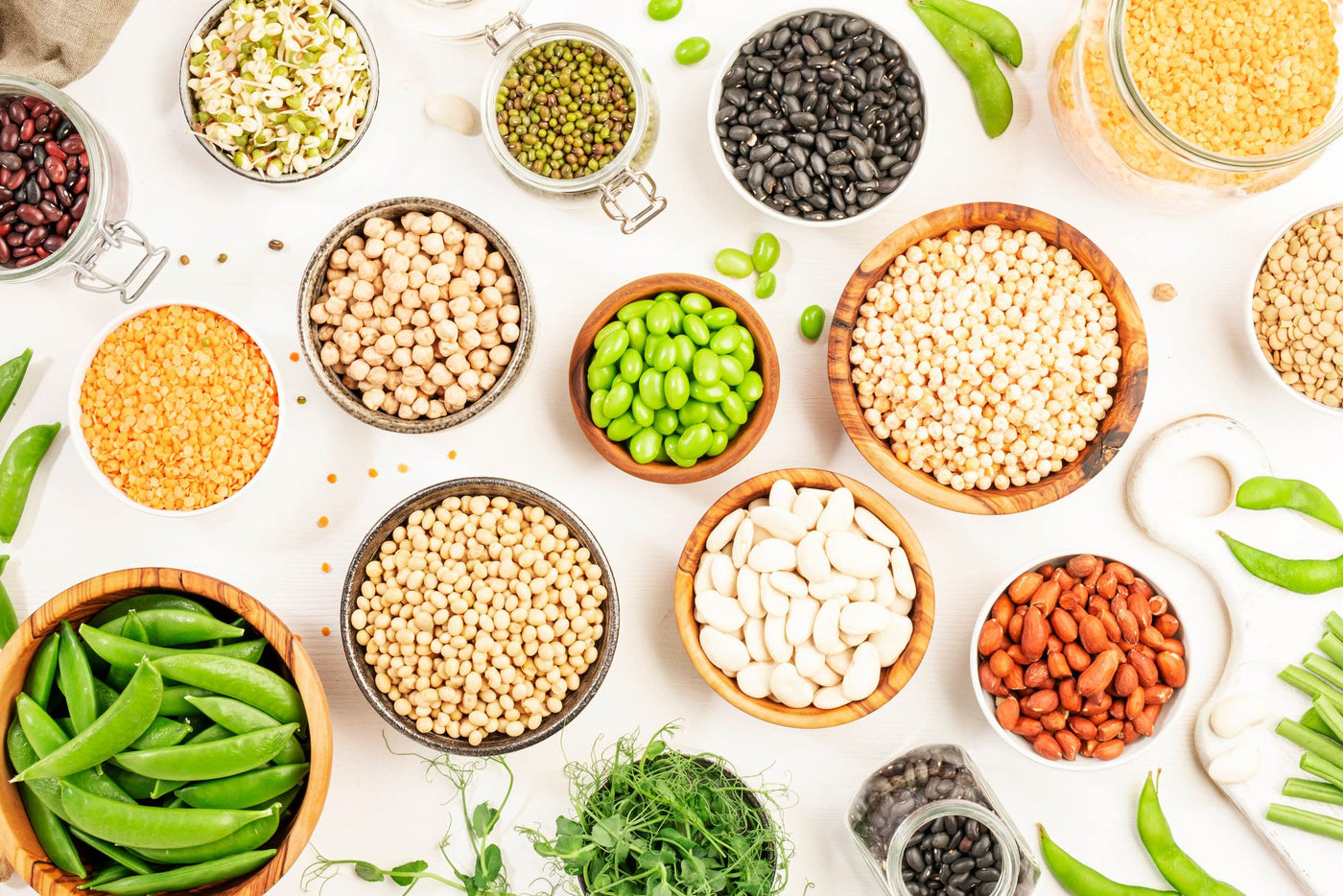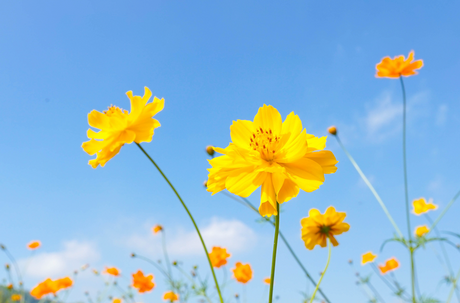- From $399 USDUnit price /Unavailable
Description
- Just as the name suggests, this style of gourd will produce a gourd that looks like a large green apple.
- Image source commons wiki
- Just as the name suggests, this style of gourd will produce a gourd that looks like a large green apple.
Gourd - Dipper, Long Handle seeds
From $399 USDUnit price /UnavailableDescription
- Just as the name suggests, this style of gourd will produce a gourd that can be repurposed as a ladle or dipper when dried
- Will grow anywhere from 2-4 feet long with an extra long handle
- Widely used for crafting
- Thin/long/narrow top with wide/round/oval base
- Once harvested, wash the gourd with a non bleaching disinfectant and then lay it out to dry in a well ventilated area
- Just as the name suggests, this style of gourd will produce a gourd that can be repurposed as a ladle or dipper when dried
Carrot - Cosmic Purple (7" Long) seeds
From $399 USDUnit price /UnavailableDescription
-
The Cosmic Purple carrot is one of the most beautiful varieties you can grow in your garden.
- A great addition to any culinary creation.
- 7" long and 2" thick with thickly tapered ends
- Tender and very sweet
- Carrots are a sun-loving plants that also like the cold.
-
Day to Maturity | 70 days
- Carrot Seeds | Carrots are an annual cool-season crop, half-hardy to frost and light freezes. Sow seeds evenly in a very shallow furrow, about 1/4 inch deep, and keep seeds moist so they will germinate.
Click here for complete Carrot grow guide
Additional DetailsCarrot gets its characteristic and bright orange colour from β-carotene, which is metabolised into vitamin A in humans when bile salts are present in the intestines. Carrots are also rich in dietary fibre, antioxidants, and minerals.

Follow SeedsNow.com's board Carrots on Pinterest. -
The Cosmic Purple carrot is one of the most beautiful varieties you can grow in your garden.
Carrot - Heritage Rainbow Blend seeds
From $399 USDUnit price /UnavailableDescription
-
The Heritage Rainbow Blend is a mix of different colored carrots.
- 7" long and 2" thick with thickly tapered ends
- Tender and very sweet
- Carrots are sun-loving plants that also like the cold.
-
Days to Maturity | 70 days
- Carrot Seeds | Carrots are an annual cool-season crop, half-hardy to frost and light freezes. Sow seeds evenly in a very shallow furrow, about 1/4 inch deep, and keep seeds moist so they will germinate.
Click here for complete Carrot grow guide
Additional Details
Carrot gets its characteristic and bright orange colour from β-carotene, which is metabolised into vitamin A in humans when bile salts are present in the intestines. Carrots are also rich in dietary fibre, antioxidants, and minerals.

Follow SeedsNow.com's board Carrots on Pinterest. -
The Heritage Rainbow Blend is a mix of different colored carrots.
Sprouts/Microgreens - Radish, Daikon seeds
From $399 USDUnit price /UnavailableDescription
- Organic
- They're easy to grow - and - taste great.
- Country of Origin: Italy
-
Hints of pepper flavor.
-
Radish sprouts have gained popularity in recent years.
- Day to Maturity | 3-6 days
Follow SeedsNow.com's board Radish on Pinterest. - Organic
- From $399 USDUnit price /Unavailable
Description
Mustard - Tatsoi (Tah Tsai) seeds
From $399 USDUnit price /UnavailableDescription
Tatsoi mustard is a versatile, fast-growing leafy green perfect for your garden. Known for its mild, slightly mustardy flavor, Tatsoi adds a fresh, nutritious boost to salads, stir-fries, and soups. Its compact rosette form fits well in small spaces or containers, making it ideal for gardeners of any size plot. Easy to grow and harvest, Tatsoi thrives in cooler weather, ensuring a steady supply of crisp, tender leaves throughout the season. Enhance your garden’s variety and enjoy flavorful, wholesome greens with Tatsoi mustard.
- Produces dark green spoon shaped leaves.
- Popular oriental green.
- Excellent for hydroponic systems.
- Highly resistant to cold and grows well during the winter months.
-
Days to Maturity | 55 days
📚 Click here for our complete Mustard grow guide
Additional DetailsMustard is high in Vitamin A, B, and C. Mustard greens are very popular in the southern U.S. where they are generally slow-cooked with ham hocks or other smoked-pork products. Asian cuisines generally use mustard greens pickled or stir-fried.
- Produces dark green spoon shaped leaves.
Corn Salad (Mache - Lamb's Lettuce) - French seeds
From $399 USDUnit price /UnavailableDescription
- Valerianella locusta (aka Corn Salad) is a small annual plant that is eaten as a leaf vegetable. It has a characteristic nutty flavor, dark green color, and soft texture, and is popularly served as salad greens. //Wikipedia
- Corn Salad has a delicate flavor, similar to a butterhead lettuce. It is quite hardy and requires very little care while remaining practically free of pests & disease. Corn salad is also known for growing vigorously in almost any soil!
- We think Corn Salad tastes best right out of the garden with a light drizzle of olive oil and a squeeze of fresh lemon. Once you try this cold-hardy green, you'll be sure to make it a staple in your fall/winter gardens every year.
-
Day to Maturity | only 40 days
Corn Salad (Mache - Lamb's Lettuce) - Dutch seeds
From $399 USDUnit price /UnavailableDescription
-
Valerianella locusta (aka Corn Salad) is a small annual plant that is eaten as a leaf vegetable. It has a characteristic nutty flavor, dark green color, and soft texture, and is popularly served as salad greens. //Wikipedia
- Corn Salad has a delicate flavor, similar to a butterhead lettuce. It is quite hardy and requires very little care while remaining practically free of pests & disease. Corn salad is also known for growing vigorously in almost any soil!
- We think Corn Salad tastes best right out of the garden with a light drizzle of olive oil and a squeeze of fresh lemon. Once you try this cold-hardy green, you'll be sure to make it a staple in your fall/winter gardens every year.
-
Day to Maturity | only 40 days
-
Valerianella locusta (aka Corn Salad) is a small annual plant that is eaten as a leaf vegetable. It has a characteristic nutty flavor, dark green color, and soft texture, and is popularly served as salad greens. //Wikipedia
Carrot - Nutri-Red (9" Long) seeds
From $399 USDUnit price /UnavailableDescription
-
The Nutri-Red carrot is a brilliant red color with a tinge of orange .
- 9" long slim tapered ends.
- Excellent for stews and many culinary creations.
- Tender and very sweet with a strong carrot flavor.
- Carrots are a sun-loving plants that also like the cold.
- Just keep them consistently watered and they'll be happy.
-
Day to Maturity | 75 days
- Carrot Seeds | Carrots are an annual cool-season crop, half-hardy to frost and light freezes. Sow seeds evenly in a very shallow furrow, about 1/4 inch deep, and keep seeds moist so they will germinate.
Click here for complete Carrot grow guide
Additional DetailsCarrot gets its characteristic and bright orange colour from β-carotene, which is metabolised into vitamin A in humans when bile salts are present in the intestines. Carrots are also rich in dietary fibre, antioxidants, and minerals.
Follow SeedsNow.com's board Carrots on Pinterest. -
The Nutri-Red carrot is a brilliant red color with a tinge of orange .
Marigold - Sparky Mix Flower seeds
From $399 USDUnit price /UnavailableDescription
- Sparky Marigold flowers are bright, bold, and beautiful
- Colors range from orange, red, and yellow
- Grows only 12" - 14" tall
- Most popular for attracting butterflies, bees, and other beneficial pollinators
- Sparky is easy to grow and will grow all summer
- Great for cut flowers and floral arrangements
- Sparky Marigold flowers are bright, bold, and beautiful
Swiss Chard - Barese "Baby Leaf" Dark Green seeds
From $399 USDUnit price /UnavailableDescription
- The Barese Swiss Chard variety produces delicious tender 10" tall dark glossy green leaves with curled edges
- A delicious baby leaf that grows quickly
- Ready to harvest in less than 30 days. Plant produces good yields of 10" tall leaves
- Excellent for salads and/or steamed with others greens
- Days to Maturity | Less than 30 days!
Additional DetailsSwiss chard is high in vitamins A, K and C, with a 175g serving containing 214%, 716%, and 53%, respectively, of the recommended daily value. It is also rich in minerals, dietary fiber and protein.
- The Barese Swiss Chard variety produces delicious tender 10" tall dark glossy green leaves with curled edges
- From $399 USDUnit price /Unavailable
Description

Roman Chamomile, also called English Chamomile, has been cultivated as a medicinal herb since Medieval times. This hardy, aromatic, mat-forming groundcover perennial in the daisy family produces small white flowers with large yellow solid cone centers and aromatic, fern-like foliage. Easily spreads through both reseeding and creeping roots, and can become invasive. Use it to fill in space between stones or pavers, or create a fragrant, low-maintenance “chamomile lawn” like the royals do at Buckingham Palace. Both the apple-scented flowers and stems are used fresh or dried, and steeped into a calming herbal tea sipped before beddy-bye time.
Apple fragrance
Grows 3"-6" tall
Can be invasive
Good for containersAs a companion plant, it attracts pollinators and beneficial insects; repels cabbage moths, cabbage white fly, cabbage worms, cucumber beetles, and mosquitoes; and is said to increase the fragrance and flavor of aromatic herbs such as basil, mint, oregano, rosemary, sage, and thyme.
German Chamomile has many of the same uses as Roman Chamomile, but it’s a tall, bushy annual with more, but smaller flowers. You can determine which type of Chamomile you have if you cut open the yellow center of the flower. German has hollow centers while Roman has solid ones.
As a medicinal herb, Chamomile has been used internally to treat allergies, anxiety, arthritis, asthma, colds, colic, cough, flatulence, gum disease, headache, indigestion, inflammation, insomnia, irritable bowel syndrome (IBS), menstrual cramps, morning sickness, stress, nervousness, restlessness, and stomach upset, and externally to treat burns, earache, hemorrhoids, mouth sores, skin problems, sunburns, teething pain, tired eyes, toothache, and wounds.
⚠️ Medicinal properties are presented as information only, and are not a recommendation or prescription for use. Consult a medical professional before using any herb medicinally.
SEED PLANTING TIPS
- Botanical name: Chamaemelum nobile
- Life cycle: Herbaceous perennial
- Hardiness zones: 4-9
- Planting season: Spring, summer, fall
- Days to maturity: 60-65 days
- Depth to plant seeds: Lightly cover - seeds need light to germinate
- Days to germinate (sprout): 7-14 days
- Germination soil temps: 55F-70F
- Spacing between plants: 6"-9" apart
- Spacing between rows: 18"-24" apart
- # of plants per sq. ft.: Appx. 4 plants per sq. ft.
- Soil types: Sandy, loamy, silty, chalky, shallow, poor, rich, moist, well-drained
- Soil pH: 5.5-7.5
- Sun needs: Full sun, part shade
- Water needs: Low - do not overwater
- Cold stratify: No
- Frost tolerant: Yes
- Heat tolerant: No
- Drought tolerant: Yes
- Deer resistant: Yes
- Culinary use: No
- Medicinal use: Yes
Good companion plants: Basil, Bean, Broccoli, Brussels Sprouts, Cabbage, Carrot, Cauliflower, Chives, Collards, Cucumber, Fava Bean, Garlic, Hyssop, Kale, Lavender, Marigold, Mint, Mustard, Onion, Oregano, Pepper, Parsley, Rosemary, Soybean, Sage, Thyme, Squash, Tomato, Zucchini
More facts about Chamomile:
-
Chamomile helps combat headaches, toothaches, and earaches.
- Sometimes known as "the plant doctor", because it is thought to help the growth and health of many other plants, especially ones that produce essential oils.
-
Thought to increase production of those oils, making certain herbs, like mints (spearmint, sage, oregano) and basil stronger in scent and flavor.
- Can be taken as a herbal tea, two teaspoons of dried flower per cup of tea, which should be steeped for ten to fifteen minutes while covered to avoid evaporation of the volatile oils.
See Chamomile Recipes & Growing Tips on our Pinterest Board
Follow SeedsNow.com's board Chamomile on Pinterest. Shungiku, Edible Chrysanthemum seeds
From $399 USDUnit price /UnavailableDescription
- Shungiku, Edible Chrysanthemum is a very versatile asian green
- Known as Shungiku, Edible Chrysanthemum, Garland Chrysanthemum, Chop Suey Greens and many other names
- This is a salad green that can be grown in winter and again in spring
- The flowers of Shungiku can be dried and stored to be used for tea. Often considered a substitute for Chamomile - with its soothing and stomach quieting properties
-
Days to Maturity | 30 - 50 days
- Shungiku, Edible Chrysanthemum is a very versatile asian green
- From $399 USDUnit price /Unavailable
Description
- Annual plant
- Adds great flavor and color to many culinary creations
- 3 ft. plant with strongly aromatic foliage, stems, and heads
- Excellent for fresh pickling
-
Days to Maturity | 40 - 65 days
Additional Details
Dill has a very long history of herbal use going back more than 2,000 years. The seeds are a common and very effective household remedy for a wide range of digestive problems. An infusion is especially efficacious in treating gripe in babies and flatulence in young children. The seed is aromatic, carminative, mildly diuretic, galactogogue, stimulant and stomachic.
Other Medicinal Properties
Dill is also used in the form of an extracted essential oil. Used either in an infusion, or by eating the seed whole, the essential oil in the seed relieves intestinal spasms and griping, helping to settle colic. Chewing the seed improves bad breath. Dill is also a useful addition to cough, cold and flu remedies, it can be used with antispasmodics such as Viburnum opulus to relieve period pains. Dill will also help to increase the flow of milk in nursing mothers and will then be taken by the baby in the milk to help prevent colic.
See Dill Recipes & Growing Tips on our Pinterest Board
Follow SeedsNow.com's board Dill on Pinterest. Swiss Chard - Canary Yellow seeds
From $399 USDUnit price /UnavailableDescription
Yellow Canary Swiss Chard
-
The Yellow Canary Swiss Chard is a popular plant that produces some of the most amazing looking swiss chard leaves in a bright shades of yellow.
- Perfect for salads or steamed greens.
- One of this years most popular varieties to grow.
- Extremely healthy.
- Easy to grow.
-
Day to Maturity | 65 days
Additional DetailsSwiss chard is high in vitamins A, K and C, with a 175g serving containing 214%, 716%, and 53%, respectively, of the recommended daily value. It is also rich in minerals, dietary fiber and protein.
-
The Yellow Canary Swiss Chard is a popular plant that produces some of the most amazing looking swiss chard leaves in a bright shades of yellow.
Squash (Winter) - Burgess Buttercup seeds
From $399 USDUnit price /UnavailableDescription
Squash (Winter), Burgess Buttercup
- Cucurbita maxima.
- Plant produces heavy yields of 8" long turban shaped green squash with silvery white stripes.
- The yellow orange flesh is very sweet and grows 3 to 5 lbs.
- The Burgess strain stores well.
-
A winter squash variety.
-
Day to Maturity | 90 days
- Cucurbita maxima.
- From $399 USDUnit price /Unavailable
Description

Yarrow, Medicinal Herb (100% Heirloom/Non-Hybrid/Non-GMO)- Yarrow has a high reputation and is widely employed in herbal medicine, administered both internally and externally. It is used in the treatment of a very wide range of disorders but is particularly valuable for treating wounds, stopping the flow of blood, treating colds, fevers, kidney diseases, menstrual pain etc.
-
Day to Maturity | 65 days
- From $399 USDUnit price /Unavailable
Description
- Wormwood is a very bitter plant with a long history of use as a medicinal herb
- Acts as a natural wasp repellant - many people plant wormwood as a garden border
- It is valued especially for its tonic effect on the liver, gallbladder and digestive system
- It is an extremely useful medicine for those with weak and under-active digestion
- It is known to increase stomach acid and bile production, improving digestion along with the absorption of nutrients
- Days to Maturity | 65 days
Additional DetailsWormwood also eases wind and bloating and, if taken regularly, helps the body return to full vitality after a prolonged illness. Use with caution, the plant should be taken internally in small doses for short-term treatment only, preferably under the supervision of a qualified practitioner. It should not be prescribed for children or pregnant women.
- Wormwood is a very bitter plant with a long history of use as a medicinal herb
- From $399 USDUnit price /Unavailable
Description

-
The Ruby Red Swiss Chard is an extremely prolific plant that is a very popular variety for home growers. The plant grows to about 2' tall and produces some of the most amazing looking swiss chard leaves in a deep shade of ruby red
- Perfect if you're into juicing your swiss chard leaves
- Great to saute and/or steam
- Excellent as a salad
- Plant yields all summer long into the fall months
- Extremely healthy
- Easy to grow
-
Days to Maturity | 65 days
Additional DetailsSwiss chard is high in vitamins A, K and C, with a 175g serving containing 214%, 716%, and 53%, respectively, of the recommended daily value. It is also rich in minerals, dietary fiber and protein.
-
The Ruby Red Swiss Chard is an extremely prolific plant that is a very popular variety for home growers. The plant grows to about 2' tall and produces some of the most amazing looking swiss chard leaves in a deep shade of ruby red
Swiss Chard - Rainbow Mix seeds
From $399 USDUnit price /UnavailableDescription

- The Rainbow Swiss Chard is a popular plant that produces some of the most amazing looking swiss chard leaves in shades of red, orange, purple, yellow, and white
- Perfect for salads or steamed greens
- One of this years most popular varieties to grow
- A heirloom variety from Australia
- Extremely healthy
- Easy to grow - Days to Maturity | 65 days
Additional DetailsSwiss chard is high in vitamins A, K and C, with a 175g serving containing 214%, 716%, and 53%, respectively, of the recommended daily value. It is also rich in minerals, dietary fiber and protein.
- The Rainbow Swiss Chard is a popular plant that produces some of the most amazing looking swiss chard leaves in shades of red, orange, purple, yellow, and white
- From $399 USDUnit price /Unavailable
Description

-
The Orange Swiss Chard is a popular plant that produces some of the most amazing looking swiss chard leaves in a bright shade of orange
- Perfect for salads or steamed greens
- One of this years most popular varieties to grow
- Extremely healthy
- Easy to grow
-
Days to Maturity | 65 days
Additional DetailsSwiss chard is high in vitamins A, K and C, with a 175g serving containing 214%, 716%, and 53%, respectively, of the recommended daily value. It is also rich in minerals, dietary fiber and protein.
-
The Orange Swiss Chard is a popular plant that produces some of the most amazing looking swiss chard leaves in a bright shade of orange
Swiss Chard - Magenta Sunset seeds
From $399 USDUnit price /UnavailableDescription

-
The Magenta Swiss Chard is a popular plant that produces bright magenta colored stems
- Perfect for salads or steamed greens
- One of this years most popular varieties to grow
- Extremely healthy
- Easy to grow
- Days to Maturity | 65 days
Additional DetailsSwiss chard is high in vitamins A, K and C, with a 175g serving containing 214%, 716%, and 53%, respectively, of the recommended daily value. It is also rich in minerals, dietary fiber and protein.
-
The Magenta Swiss Chard is a popular plant that produces bright magenta colored stems
- From $399 USDUnit price /Unavailable
Description
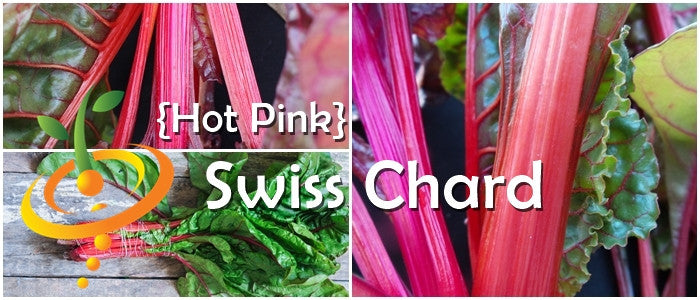
-
The Pink Swiss Chard produces excellent yields of dark green shiny leaves with magenta/hot pink stalks and veins
- Excellent for salads, juicing, and/or steamed with others greens
- Extremely healthy
- Easy to grow
- Days to Maturity | 65 days
Additional DetailsSwiss chard is high in vitamins A, K and C, with a 175g serving containing 214%, 716%, and 53%, respectively, of the recommended daily value. It is also rich in minerals, dietary fiber and protein.
-
The Pink Swiss Chard produces excellent yields of dark green shiny leaves with magenta/hot pink stalks and veins
Swiss Chard - Classic "Fordhook" Giant seeds
From $399 USDUnit price /UnavailableDescription
- This Swiss Chard variety produces beautiful and delicious tender pale green stems and dark green leaves with white veins.
- Plant produces good yields of 10" tall leaves
- Excellent for salads and/or steamed with others greens
- A cold and heat tolerant variety
- Days to Maturity | 60 days
Additional DetailsSwiss chard is high in vitamins A, K and C, with a 175g serving containing 214%, 716%, and 53%, respectively, of the recommended daily value. It is also rich in minerals, dietary fiber and protein.
- This Swiss Chard variety produces beautiful and delicious tender pale green stems and dark green leaves with white veins.
Sunflower, Sun Gold (Tall) Flower seeds
From $399 USDUnit price /UnavailableDescription

- Giant "Teddy Bear" type sunflower
- Seven to eight inch bold yellow flowers
- Plants grow to 6 feet tall
- Easy to grow
- Giant "Teddy Bear" type sunflower
Sunflower, Sunspot (Dwarf) Flower seeds
From $399 USDUnit price /UnavailableDescription
The Sunspot (Dwarf) sunflower, scientifically known as Helianthus annuus, is a popular choice among gardeners seeking to add vibrant color and visual interest to their outdoor spaces. This particular variety is characterized by its compact growth habit, typically reaching heights of 12 to 24 inches, making it ideal for smaller gardens or container planting.
One of the most notable features of the Sunspot sunflower is its large, round flower heads, which can measure up to 8 inches in diameter. These striking blooms are composed of bright yellow petals surrounding a central disc filled with seeds, attracting a variety of pollinators, including bees and butterflies. In fact, studies have shown that sunflowers can increase pollinator activity in gardens by up to 50%, enhancing the overall biodiversity of the area.
In terms of cultivation, the Sunspot sunflower thrives in full sun and well-drained soil, preferring a pH level between 6.0 and 7.5. It is essential to provide adequate spacing, typically 12 to 18 inches apart, to allow for proper air circulation and growth. The Sunspot sunflower is also known for its resilience, exhibiting a tolerance to drought conditions once established, which can be beneficial in regions with variable rainfall.
From a nutritional perspective, the seeds produced by the Sunspot sunflower are rich in essential fatty acids, protein, and various vitamins and minerals. They can be harvested for consumption or left in the garden to provide food for birds during the winter months. Approximately 30% of the seed's weight is composed of oil, making it a valuable crop for both ornamental and agricultural purposes.
In addition to their aesthetic and ecological benefits, Sunspot sunflowers can also serve as effective companions in vegetable gardens. Their tall, sturdy stems can provide support for climbing plants, while their presence can deter certain pests. Research indicates that planting sunflowers alongside crops such as tomatoes and peppers can reduce pest populations by up to 20%, promoting healthier plant growth.
In summary, the Sunspot (Dwarf) sunflower is a versatile and beneficial addition to any garden. Its compact size, striking appearance, and ability to attract pollinators make it an excellent choice for both novice and experienced gardeners.
Squash (Winter) - Waltham Butternut seeds
From $399 USDUnit price /UnavailableDescription
- AAS Winner. Recommended by USU
- Grows as a compact vine plant (not as a bush)
- Excellent butternut squash with better uniformity, larger yields and richer flavor
- Produces tan fruits which measure 8 to 10 inches long with a deep orange interior
- Days to Maturity | 100 days
Additional DetailsThough considered a vegetable in cooking, botanically speaking, squash is a fruit (being the receptacle for the plant's seeds). Squash can be served fresh (in salads) and cooked (squash stuffed with meat, fried squash, baked squash).
Squash (Winter) - Spaghetti seeds
From $399 USDUnit price /UnavailableDescription

- Perfect for low-carb pasta!
- Cut this fruit open and peel away at the flesh to find tender delicate strands of spaghetti squash ready to be enjoyed as a meal with some tomato sauce and parmesan cheese.
- Grows as a compact vine
- Excellent spaghetti squash with better uniformity, larger yields and richer flavor
- One of the most popular varieties to grow in any-size garden
- The inside of this squash looks like spaghetti pasta and tastes even better
-
Days to Maturity | 85 days
- Perfect for low-carb pasta!
Squash (Summer) - Scallop, Golden Bush seeds
From $399 USDUnit price /UnavailableDescription

- One of the most popular and rare heirloom Squash varieties
- Grows as a compact bush size plant (not as a vine)
- Produces 4-5" golden-yellow fruits
- Grow well in small spaces
- These plants grow continuously over a long season
- Days to Maturity | 65 days
Additional DetailsThough considered a vegetable in cooking, botanically speaking, squash is a fruit (being the receptacle for the plant's seeds). Squash can be served fresh (in salads) and cooked (squash stuffed with meat, fried squash, baked squash).
- One of the most popular and rare heirloom Squash varieties
Squash (Summer) - Marrow, White seeds
From $399 USDUnit price /UnavailableDescription

-
The White Marrow Summer Squash produces some of the most beautiful looking snow white squash
- Grows as a compact vine (not as a bush)
- Best when picked at 8" long
- Perfect for small gardens, containers, and raised beds
-
Days to Maturity | 85 days
- Best Months to Plant | [March - June] Summer squash love the sun and can't get enough of it. They are warm-season crops and are sensitive to cold/frost. Plant your seeds as soon as the soil has warmed.
Additional DetailsThough considered a vegetable in cooking, botanically speaking, squash is a fruit (being the receptacle for the plant's seeds). Squash can be served fresh (in salads) and cooked (squash stuffed with meat, fried squash, baked squash).
-
The White Marrow Summer Squash produces some of the most beautiful looking snow white squash
Squash (Summer) - Marrow, Green seeds
From $399 USDUnit price /UnavailableDescription

- The Green Marrow Summer Squash produces some of the most beautiful looking dark green squash
- Grows as a compact bush (not as a vine)
- Best when picked at 8" long
- Perfect for small gardens - grows on a compact bush
- Days to Maturity | 85 days
Additional DetailsThough considered a vegetable in cooking, botanically speaking, squash is a fruit (being the receptacle for the plant's seeds). Squash can be served fresh (in salads) and cooked (squash stuffed with meat, fried squash, baked squash).
Squash (Winter) - Delicata seeds
From $399 USDUnit price /UnavailableDescription
 Squash (Winter), Delicata (100% Heirloom/Non-Hybrid/Non-GMO)
Squash (Winter), Delicata (100% Heirloom/Non-Hybrid/Non-GMO)-
The Delicata Squash are 8" long by 4" wide and have the most amazing exterior.
- Grows as a vine.
- Has a sweet potato flavor
- Vine type plant is perfect for small gardens
- Amazing flavor
-
Day to Maturity | 80 days
- Best Months to Plant | [March - June] Winter squash love the sun and can't get enough of it. They need about 3 months of warm temperature and one additional month of cooler temps to fully mature.



Additional Details
Though considered a vegetable in cooking, botanically speaking, squash is a fruit (being the receptacle for the plant's seeds). Squash can be served fresh (in salads) and cooked (squash stuffed with meat, fried squash, baked squash).
-
The Delicata Squash are 8" long by 4" wide and have the most amazing exterior.
Squash (Summer) - Dark Green seeds
From $399 USDUnit price /UnavailableDescription
- The Dark Green Squash is another one of the most popular squash varieties on the market
- Grows as a compact bush (not as a vine)
- Produces a dark green, glossy fruit, which is long, straight & slender
-
Firm, very tender, with excellent flavor making it perfect sliced, fried, steamed, or baked
- Ideal for home gardens and market growers
-
A summer squash variety
- Very easy to grow.
- Days to Maturity | 80 days
Additional DetailsThough considered a vegetable in cooking, botanically speaking, squash is a fruit (being the receptacle for the plant's seeds). Squash can be served fresh (in salads) and cooked (squash stuffed with meat, fried squash, baked squash).
- The Dark Green Squash is another one of the most popular squash varieties on the market
Squash (Winter) - Crookneck, Cushaw Green Striped seeds
From $399 USDUnit price /UnavailableDescription

- The Cushaw plant produces some of the most beautiful 20" long squash
-
Curved/crook-neck variety
- Grows as a vine (not as a bush)
- Yellow colored flesh
- Very sweet and full of flavor - perfect for pies and canning
- Ideal for any sized garden and easy to grow
- Days to Maturity | 100 days
Additional Details
Though considered a vegetable in cooking, botanically speaking, squash is a fruit (being the receptacle for the plant's seeds). Squash can be served fresh (in salads) and cooked (squash stuffed with meat, fried squash, baked squash).
- The Cushaw plant produces some of the most beautiful 20" long squash
Squash (Summer) - Cocozelle seeds
From $399 USDUnit price /UnavailableDescription

- The Cocozelle squash is an Italian heirloom bush type zucchini that produces excellent yields of dark green squash with light green stripes
- Grows as a compact bush size plant (not as a vine)
- Extremely flavorful and tender
- Best when harvested at 12" long or smaller
- Makes a great variety for slicing, frying, and steaming
- Pick the fruits often (when they are young) to have a longer harvest
- The Bush type plant is perfect for small gardens and containers
- Days to Maturity | 50 days
Additional Details
Though considered a vegetable in cooking, botanically speaking, squash is a fruit (being the receptacle for the plant's seeds). Squash can be served fresh (in salads) and cooked (squash stuffed with meat, fried squash, baked squash).
- The Cocozelle squash is an Italian heirloom bush type zucchini that produces excellent yields of dark green squash with light green stripes
Squash (Summer) - Black Beauty Zucchini seeds
From $399 USDUnit price /UnavailableDescription

-
An All America Selections (AAS) Winner. The Black Beauty Squash is one of the most popular varieties on the market
- Grows as a compact bush (not as a vine)
- Produces a dark green, glossy fruit, which is long, straight & slender
- Firm, very tender, with excellent flavor
- Easy to grow
- Days to Maturity | 110 days
Though considered a vegetable in cooking, botanically speaking, squash is a fruit (being the receptacle for the plant's seeds). Squash can be served fresh (in salads) and cooked (squash stuffed with meat, fried squash, baked squash).
Follow SeedsNow.com's board Zucchini Recipes on Pinterest. -
An All America Selections (AAS) Winner. The Black Beauty Squash is one of the most popular varieties on the market
Squash (Winter) - Acorn Table Queen seeds
From $399 USDUnit price /UnavailableDescription

- All-America Selections Winner! The Table Queen Squash plant produces large 7" deep green acorn shaped squash.
- Grows as a compact bush size plant (not as a vine)
- Extremely flavorful
- Dark orange flesh
- Excellent sliced, fried, or steamed
- Easy to grow even in poor soil
- Days to Maturity | 85 days
Additional DetailsThough considered a vegetable in cooking, botanically speaking, squash is a fruit (being the receptacle for the plant's seeds). Squash can be served fresh (in salads) and cooked (squash stuffed with meat, fried squash, baked squash).
- All-America Selections Winner! The Table Queen Squash plant produces large 7" deep green acorn shaped squash.
Sprouts/Microgreens - Wheat Grass seeds
From $399 USDUnit price /UnavailableDescription
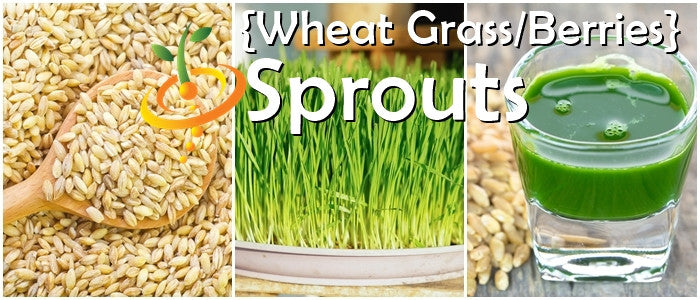 Wheat Grass
Wheat Grass- Wheatgrass is the freshly sprouted first leaves of the common wheat plant, used as a food, drink, or dietary supplement. Like most plants, wheatgrass contains chlorophyll, amino acids, minerals, vitamins and enzymes. Claims about the health benefits of wheatgrass range from providing supplemental nutrition to having unique curative properties.
- Wheatgrass is an excellent source of dietary fiber, just like any whole grains.
- High in folic acid, protein, B-complex vitamins and vitamin E.
- The wheat sprouts are extremely rich in Vitamins A,B, C and E along with other minerals.
-
Day to Sprout | 2-3 days - The wheat grass will be ready to juice in appx. 7 to 10 days
Read: How to Sprout Wheat Berries at Home in a Mason Jar
Read: How to Grow Wheatgrass at Home *Without Soil*
SHIPPING NOTE: This item cannot be shipped to Canada.
- Wheatgrass is the freshly sprouted first leaves of the common wheat plant, used as a food, drink, or dietary supplement. Like most plants, wheatgrass contains chlorophyll, amino acids, minerals, vitamins and enzymes. Claims about the health benefits of wheatgrass range from providing supplemental nutrition to having unique curative properties.
Sprouts/Microgreens - Radish, Classic seeds
From $399 USDUnit price /UnavailableDescription
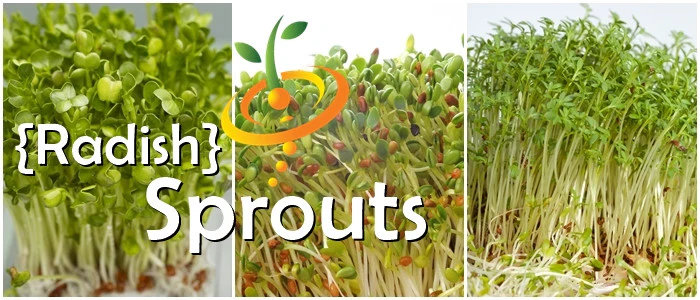 Radish microgreens deliver a peppery punch to salads, sandwiches, and garnishes while packing impressive nutritional density. These fast-growing shoots are ready to harvest in just 7-10 days, making them ideal for home growers seeking quick results. Rich in vitamins C and K, plus glucosinolates known for their potential health benefits, radish microgreens thrive in shallow trays with consistent moisture and indirect light. Simply soak seeds overnight, spread evenly on growing medium, and maintain humidity until sprouting. Their crisp texture and bold flavor make them a favorite among chefs and health-conscious home gardeners alike.
Radish microgreens deliver a peppery punch to salads, sandwiches, and garnishes while packing impressive nutritional density. These fast-growing shoots are ready to harvest in just 7-10 days, making them ideal for home growers seeking quick results. Rich in vitamins C and K, plus glucosinolates known for their potential health benefits, radish microgreens thrive in shallow trays with consistent moisture and indirect light. Simply soak seeds overnight, spread evenly on growing medium, and maintain humidity until sprouting. Their crisp texture and bold flavor make them a favorite among chefs and health-conscious home gardeners alike.
- Easy to grow - and - taste great.
- Radish sprouts have gained popularity in recent years.
- Certified Organic
Follow SeedsNow.com's board Radish on Pinterest. Sprouts/Microgreens - Mustard, Mizuna (Green) seeds
From $399 USDUnit price /UnavailableDescription
Mustard, Sprouts & Micro-Greens
- Mustard is a member of the crucifer family.
- Mustard greens are a popular dish in the Southern U.S. and are an excellent source of vitamins A and C.
- Mustard sprouts have a strong spicy flavor and are usually blended with alfalfa or clover sprouts.
Follow SeedsNow.com's board Mustard on Pinterest. - Mustard is a member of the crucifer family.
Sprouts/Microgreens - Pea, Green seeds
From $399 USDUnit price /UnavailableDescription
- Organic
- Ready to eat as a sprout just a soon as they pop.
- Sweet and delicious in salads and casseroles.
- Day to Maturity | 3-7 days
Follow SeedsNow.com's board Green Pea Sprouts on Pinterest. Sprouts/Microgreens - Barley Grass seeds
From $399 USDUnit price /UnavailableDescription

- Organic.
- Known as the the famous nutritious Super Green supplement.
- It is even more nutritious in the form of raw juice.
- Ideal for juicing.
- Can be ground up for Barley flour and bread.
- Extremely healthy and nutritious.
- Days to Harvest | Barley grass will be ready to harvest in appx. 6 to 10 days
- Organic.
Sprouts/Microgreens - Alfalfa seeds
From $399 USDUnit price /UnavailableDescription
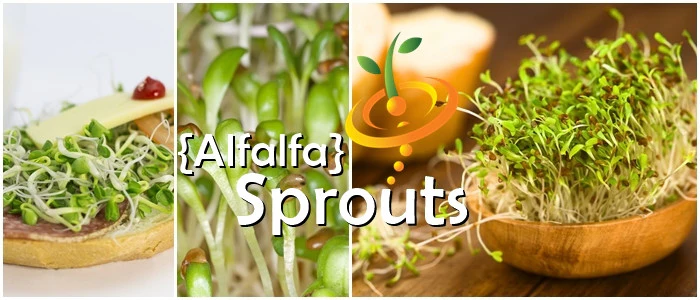
Organic alfalfa sprouts deliver nutrient-dense greens in just 5-7 days using simple indoor sprouting methods. These seeds germinate reliably in mason jars, sprouting trays, or dedicated sprouters without soil, making them ideal for year-round cultivation regardless of outdoor conditions. Alfalfa sprouts are rich in vitamins, minerals, and enzymes while remaining exceptionally low in calories, offering substantial nutritional returns from minimal space. The sprouting process requires only water, proper drainage, and consistent rinsing—no special equipment or gardening experience necessary. Certified organic seeds ensure chemical-free production from seed to harvest. Perfect for health-conscious growers seeking fresh, living foods with complete control over growing conditions. Enjoy crisp, tender sprouts in salads, sandwiches, and smoothies within days of starting your crop.
Organic
- Alfalfa is one of the healthiest and easiest sprouts you can grow!
- Extremely high in protein, calcium, plus other minerals and vitamins in the B group, vitamin C, vitamin E, and vitamin K.
- Alfalfa is extremely easy to grow.
- All organic. All natural.
- If you like Alfalfa sprouts, make sure to check out Red Clover sprouts.
- Looking for an All-in-1 kit? Check out this All-in-1 Seed Sprouting Kit + Mason Jar.

How to Grow Sprouts
The easiest method is to grow sprouts in a Mason jar. To provide plenty of fresh air, cover the top with the mesh screen.
Step One: Soaking
For a quart-sized jar, put 1 ½ to 2 tablespoons of small seeds (up to 1 cup if using larger seeds like green peas or garbanzo) in the sprouting jar. Cover top of jar with cloth or sprouting lid and rinse the seeds in warm (not hot) water. Drain and refill so that water is about an inch above the seeds. Let the seeds soak 8-12 hours (overnight). Protect from light by covering with a dish towel or placing in a cupboard.
Step Two: Rinsing
Rinse 2 to 3 times per day for 2 to 3 days. After thoroughly draining the rinse water, lay the jar on its side to spread out the seeds. Do not expose to light. After 2 to 3 days the sprouts should be filling up the jar.
Things to Remember:1. Rinse often (2-3 times/day).
2. Keep them moist, not wet.
3. Keep them at room temperature.
4. Give them air to breathe.
5. Don't grow too many in one container.
6. Keep them in a dark place.
- Alfalfa is one of the healthiest and easiest sprouts you can grow!
Sprouts/Microgreens - Bean, Adzuki seeds
From $399 USDUnit price /UnavailableDescription
- Certified Kosher by Chabad House of Western Michigan.
- Certified Organic.
- The Adzuki Bean (Vigna angularis) has been grown in the Far East for centuries.
- Adzuki beans are one of Japan’s largest crops, with annual consumption of over 120,000 metric tons.
- Adzuki beans are often sprouted for only one day, mixed with other sprouts and called a "Crispy Mix" or "Crunchy Mix."
- They are commonly used throughout Asia in a variety of ways.
- Certified Kosher by Chabad House of Western Michigan.
- From $399 USDUnit price /Unavailable
Description
- These New Zealand spinach seeds will produce very flavorful medium triangular-shaped green spinach leaves
- This is one of the few spinach varieties that produces continuously all year, from spring to fall. The more you cut and use the more it will continue to grow
- New Zealand spinach is a large growing plant and needs 2 foot rows, 1 foot between plants
- And ... unlike the other spinach varieties, the New Zealand is one that can survive through the hot summers
-
Days to Maturity | 75 days
- These New Zealand spinach seeds will produce very flavorful medium triangular-shaped green spinach leaves
- From $399 USDUnit price /Unavailable
Description

- Bloomsdale Spinach will produce heavy, glossy, dark green leaves
- Excellent flavor
- Extremely easy to grow
-
How to Grow | Spinach is very hardy and can tolerate cold — in fact, it thrives in cold weather. Spinach grows really well during winter months in the South. Spinach also grows well in early spring and late summer in the North. These seeds should be planted about four weeks before your area's average date of last frost.
- Days to Maturity | 45 days
- Bloomsdale Spinach will produce heavy, glossy, dark green leaves
- From $399 USDUnit price /Unavailable
Description

- America Spinach will produce a beautiful dark green plant in only 40 days
- Excellent flavor
- Extremely easy to grow
- Grows best during the cooler months
- Grows really well in containers and other small spaces
-
How to Grow | Spinach is very hardy and can tolerate cold — in fact, it thrives in cold weather. Spinach grows really well during winter months in the South. Spinach also grows well in early spring and late summer in the North. These seeds should be planted about four weeks before your area's average date of last frost.
- Days to Maturity | 40 days
- America Spinach will produce a beautiful dark green plant in only 40 days
- From $399 USDUnit price /Unavailable
Description

Soapwort (Saponaria officinalis) is a beautiful, robust perennial in the carnation family with dark green lance-shaped leaves and light pink star-shaped flowers that have a pleasant floral clove scent. Can grow 1'-2' tall and 12"-18" wide, and prefers cooler weather. The entire plant contains saponins, with the highest concentration in the roots, which make a gentle foamy lather when mixed with warm water, and is used as detergent or soap to clean skin, hair, and delicate fabrics. Also called Bouncing Bet, a historical expression for a laundry woman. Reseeding and runner roots enable it to spread easily and it can become invasive.As a medicinal plant, Soapwort has been used internally to treat bronchitis, colds, cough, diarrhea, kidney stones, and respiratory problems, and externally to treat acne, boils, burns, eczema, inflammation, itchy skin, muscle pain, poison ivy, psoriasis, rash, and wounds.
⚠️ Toxic to people, pets, and livestock if ingested in large quantities. Toxic to fish, so do not grow near waterways. Do not ingest while pregnant or nursing.
⚠️ Medicinal properties are presented as information only, and are not a recommendation or prescription for use. Consult a medical professional before using any plant medicinally.
- Life cycle: Herbaceous perennial
- Bloom season: Summer
- Attracts: Hummingbirds, bees, butterflies, and other pollinators
- Flower meaning: Innocence, pure love
SEED PLANTING TIPS
- Botanical name: Saponaria officinalis
- Hardiness zones: 3-9
- Planting season: Spring, fall
- Days to maturity: 85 days-2 years
- Cold stratify: Yes
- Depth to plant seeds: Lightly cover - seeds need light to germinate
- Days to germinate (sprout): 7-28 days
- Germination soil temps: 60F-70F
- Spacing between plants: 12"-18" apart
- Soil types: Clay, sandy, loamy, silty, rocky, chalky, poor, average, moist, well-drained
- Soil pH: 6.6-7.8
- Water needs: Average
- Sun needs: Full sun, part shade
- Frost tolerant: Yes
- Drought tolerant: Yes
- Deer resistant: Yes
- From $399 USDUnit price /Unavailable
Description

- Needs full sun to grow well
- It is drought tolerant and rarely, if ever needs to be watered
- Rue has a long history of use as a domestic remedy, being especially valued for its strengthening action on the eyes
- The plant contains flavonoids that reduce capillary fragility, which might explain the plants reputation as an eye strengthener.
- Days to Maturity | 75 days
**Warning** Although rue is safe when used correctly, it is considered a toxic herb that can cause side effects such as severe rashes, mood swings, sensitivity to light, stomach pains, dizziness, liver and kidney damage, sleep disorders & muscle spasms.
Follow SeedsNow.com's board Rue on Pinterest.
🌱 Featured Seed Types (A - Z)
View allcontinue shopping







